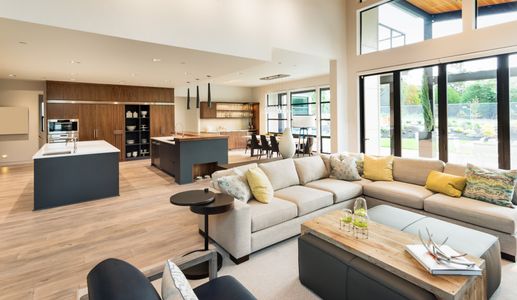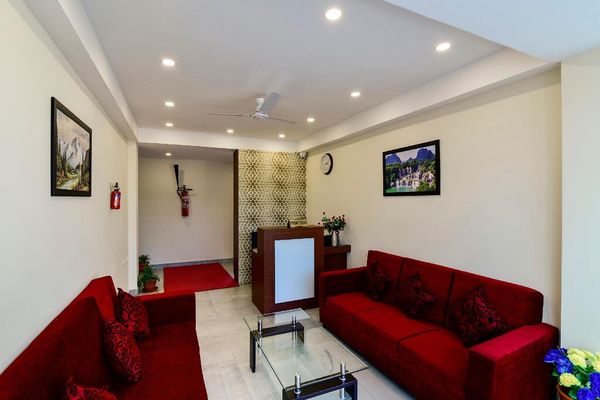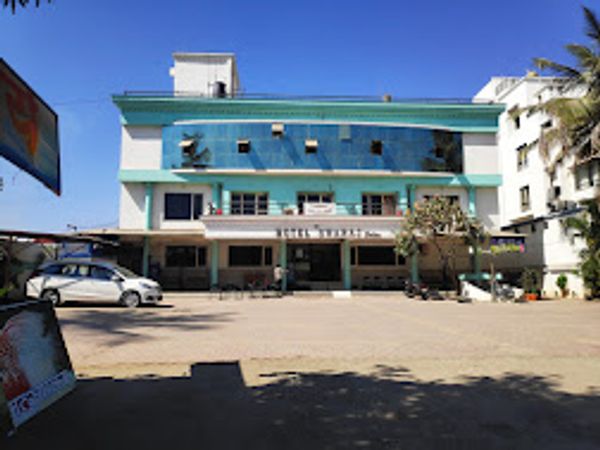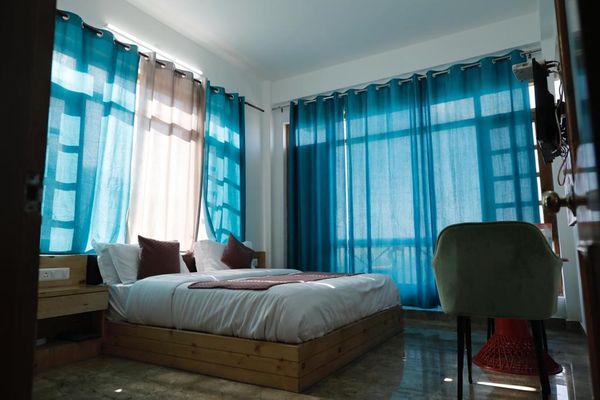Designing for Longevity in a Throwaway World
 Erika John
22 May, 2025
13 mins read
19
Erika John
22 May, 2025
13 mins read
19

The modern world operates on a paradox that would bewilder our ancestors. We possess unprecedented technological capabilities to create durable, beautiful objects that could last centuries, yet we deliberately design most products to fail, fade, or become obsolete within years or even months. This intentional impermanence has created a global culture of disposal that prioritizes novelty over permanence, convenience over craftsmanship, and profit over planetary stewardship.
Breaking free from this destructive cycle requires more than individual consumer choices or corporate responsibility initiatives. It demands a fundamental reimagining of how we approach design itself, shifting from creating objects meant to be replaced to crafting solutions intended to evolve and endure. This transformation challenges designers, manufacturers, and consumers to reconsider their relationships with material possessions and the built environments that shape daily life.
The stakes of this design revolution extend far beyond aesthetic preferences or economic considerations. Our planet's finite resources cannot sustain indefinite cycles of extraction, production, consumption, and disposal. Climate change, resource depletion, and environmental degradation all stem partially from design decisions that prioritize short-term convenience over long-term sustainability. Every object we create represents an opportunity to either perpetuate destructive patterns or contribute to regenerative solutions.
Designing for longevity requires courage to resist market pressures that encourage planned obsolescence and fashion cycles. It demands deeper understanding of materials, human psychology, and the complex relationships between form, function, and meaning. Most importantly, it requires vision to see beyond immediate profit margins toward the creation of lasting value that benefits multiple generations.
The Psychology of Permanence
Human beings maintain complex emotional relationships with objects that transcend mere functionality or aesthetic appeal. Items that accompany us through significant life events, that improve with age, or that carry family histories develop psychological significance that makes disposal unthinkable. Understanding these emotional connections provides crucial insights for designing objects that resist the throwaway mentality through meaningful engagement rather than mere durability.
Attachment theory reveals that people form stronger bonds with objects that tell stories, show signs of use, or require investment of time and care. Mass-produced items designed for immediate replacement rarely develop these meaningful connections, making them psychologically disposable regardless of their physical durability. Successful longevity design incorporates elements that encourage emotional investment and personal connection.
The patina of age, when thoughtfully anticipated in design, transforms wear patterns from flaws into features that enhance beauty and character over time. Leather that develops rich coloration through use, wood that gains depth through years of natural oil absorption, and metals that acquire protective oxidation layers all demonstrate how thoughtful material selection can make aging an asset rather than a liability.
Cultural memory plays a significant role in longevity perception. Objects that reference timeless design principles, traditional craftsmanship techniques, or enduring aesthetic philosophies feel more permanent than those that chase contemporary trends. This doesn't require copying historical styles, but rather understanding the underlying principles that have made certain designs endure across centuries while others quickly become dated.
Material Intelligence and Selection
The foundation of longevity design lies in profound understanding of how different materials behave over time under various conditions. This knowledge extends beyond basic durability testing to encompass aging characteristics, maintenance requirements, repair possibilities, and end-of-life options. Material selection becomes a complex calculation that balances initial performance, long-term behavior, environmental impact, and aesthetic evolution.
Natural materials often excel in longevity applications because they've evolved over millions of years to withstand environmental stresses while maintaining structural integrity. Stone, properly selected and applied, can last millennia while actually improving with age as surface weathering creates protective layers and enhanced visual texture. Similarly, well-chosen hardwoods develop character and strength over decades when properly maintained and protected.
However, synthetic materials shouldn't be dismissed categorically. Advanced polymers, engineered composites, and high-performance alloys can outperform natural alternatives in specific applications while offering unique advantages like corrosion resistance, dimensional stability, or reduced maintenance requirements. The key lies in honest assessment of each material's strengths and limitations rather than blanket assumptions about natural versus synthetic superiority.
Material compatibility becomes crucial when designing complex assemblies intended for long-term service. Thermal expansion differences, galvanic corrosion, chemical interactions, and mechanical stress concentrations can all cause premature failure when materials are inappropriately combined. Successful longevity design requires systems thinking that considers how all materials will interact throughout the expected service life under various environmental conditions.

Adaptive Design Philosophies
True longevity extends beyond mere durability to encompass adaptability, allowing designs to evolve with changing needs, technologies, and circumstances rather than becoming obsolete when conditions shift. This approach recognizes that the longest-lasting solutions are those that can accommodate change rather than resist it, transforming potential obsolescence into opportunities for renewed relevance and extended service.
Modular design principles enable component replacement, upgrading, or reconfiguration without requiring complete system replacement. Furniture systems that can be recombined for different spaces or uses, architectural elements that can adapt to changing occupancy needs, and technology platforms designed for continuous evolution all demonstrate how modularity can extend functional lifespans far beyond what fixed designs could achieve.
The concept of design for disassembly ensures that complex products can be efficiently separated into component materials at end-of-life, enabling recycling, reuse, or proper disposal of individual elements. This approach requires careful consideration of fastening methods, material identification systems, and disassembly sequences that remain feasible even after decades of service.
Future-proofing strategies attempt to anticipate technological, social, or environmental changes that might affect product relevance over time. While perfect prediction remains impossible, thoughtful analysis of trends and uncertainties can inform design decisions that create resilience against likely changes while maintaining core functionality regardless of external shifts.
Systems of Renewal and Restoration
Longevity design must incorporate maintenance, repair, and restoration possibilities from the initial conception phase rather than treating these considerations as afterthoughts. Products designed without clear maintenance pathways or repair possibilities often fail prematurely not due to fundamental design flaws but because minor issues cannot be addressed effectively when they arise.
Traditional heating systems demonstrate how restoration-friendly design can extend service lives far beyond original expectations. Cast Iron Radiator installations from the early twentieth century continue providing excellent service nearly a century later because their robust construction, standard dimensions, and straightforward maintenance requirements enable ongoing restoration and modernization while preserving core functionality and aesthetic appeal.
Repair accessibility requires consideration of how maintenance activities will be performed throughout the product lifecycle. Components most likely to require attention should be easily accessible without requiring disassembly of the entire system. Wear surfaces should be replaceable, adjustable elements should remain accessible, and diagnostic capabilities should enable efficient troubleshooting when problems arise.
Documentation strategies ensure that future maintenance and repair activities remain possible even when original manufacturers no longer exist or support older products. Comprehensive technical documentation, material specifications, dimensional drawings, and maintenance procedures should be preserved in formats that will remain accessible throughout the expected service life.
Economic Models for Permanence
The economic structures that govern modern commerce often work against longevity design by rewarding frequent replacement over durability. Shifting these economic incentives requires new business models that align financial success with product longevity rather than replacement frequency. These models can make longevity design economically attractive while providing better value for consumers.
Service-based models transfer ownership responsibilities from consumers to providers, creating incentives for maximum durability and efficiency. When providers retain ownership and bear maintenance costs throughout product lifecycles, they naturally gravitate toward designs that minimize long-term service requirements while maximizing performance and reliability.
Leasing and rental arrangements can make high-quality, durable products accessible to consumers who might not afford their purchase prices while ensuring that providers benefit from longevity investments. These arrangements also facilitate professional maintenance, timely upgrades, and proper end-of-life handling that individual ownership often cannot provide.
Warranty extensions and service contracts can make longevity design economically attractive by allowing providers to profit from durability rather than replacement sales. When extended warranties become profit centers rather than cost burdens, manufacturers gain financial incentives to improve long-term reliability and serviceability.
Cultural Shifts and Value Systems
Designing for longevity ultimately requires cultural transformation that redefines success, status, and satisfaction in terms of permanence rather than novelty. This shift challenges fundamental assumptions about progress, consumption, and the good life that have dominated industrial society for generations.
The maker movement demonstrates growing appreciation for craftsmanship, repair skills, and creative problem-solving that supports longevity values. This cultural shift creates markets for tools, materials, and knowledge that enable individuals to maintain, modify, and restore products rather than simply consuming and disposing of them.
Educational initiatives can develop public understanding of design quality, material properties, and maintenance techniques that support longevity choices. When consumers can distinguish between durable and disposable design characteristics, market demand naturally shifts toward products that offer genuine long-term value.
Status redefinition positions durability, craftsmanship, and thoughtful consumption as markers of sophistication rather than depicting constant acquisition and disposal as success indicators. This cultural shift can make longevity design socially attractive while reducing pressure for continuous replacement and upgrading.
Conclusion
Designing for longevity in a throwaway world represents both a technical challenge and a moral imperative. It requires mastery of materials, understanding of human psychology, and vision for sustainable futures that prioritize lasting value over temporary convenience. The solutions demand collaboration between designers, manufacturers, policymakers, and consumers who share commitment to creating a more thoughtful and sustainable material culture.
The transition away from disposable design thinking will not happen overnight, but every project that prioritizes longevity over convenience creates precedents and possibilities for broader transformation. Success requires patience, persistence, and willingness to challenge established patterns that may seem economically or culturally entrenched but are ultimately unsustainable.
The future depends on our ability to create objects and environments that serve not just our immediate needs but the needs of generations yet to come. This responsibility cannot be delegated to others or deferred to future solutions. It requires action today, in every design decision, material choice, and creative solution we develop and support.
Written By:
Erika John



Hotels at your convenience
Now choose your stay according to your preference. From finding a place for your dream destination or a mere weekend getaway to business accommodations or brief stay, we have got you covered. Explore hotels as per your mood.





